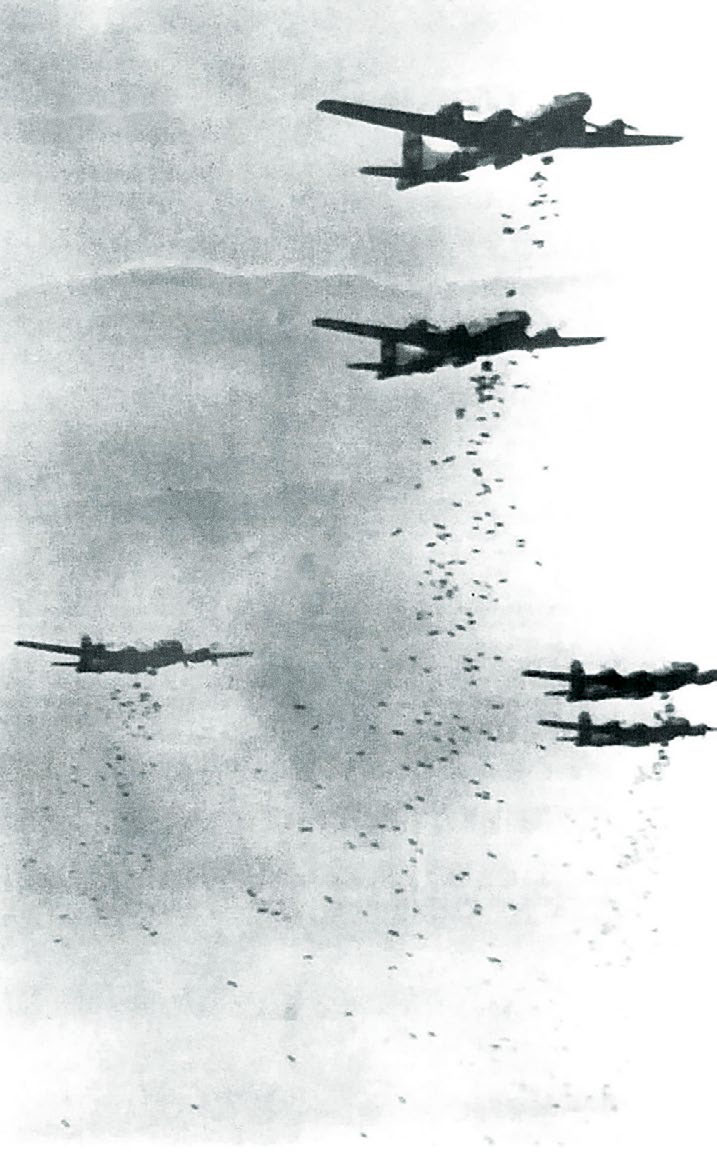The Pathfinders arrived first, marking the target area with an immense ‘X’ etched in flame. Then 325 Boeing B-29 Superfortress heavy bombers came in waves, sowing death and destruction on a scale so massive that it seemed incomprehensible. For three hours during the execution of Operation Meetinghouse, on 9-10 March 1945, the US XXI Bomber Command rained 1,665 tons of M-47 incendiary clusters, napalm and other ordnance on the Japanese capital of Tokyo. Like other cities in Japan, Tokyo was constructed largely of wood and paper, and the resulting hellish conflagration consumed 250,000 buildings while burning 16 square miles of the city to the ground and killing 100,000 civilians. It was the single most destructive air raid in history.

Boeing B-29 Superfortress bombers drop cargoes of death on a Japanese city. The B-29s helped bring Japan to its knees
© Getty
The architect of the devastating raid was Major General Curtis LeMay, who had come from China in August 1944 to lead XXI Bomber Command, based in the Mariana Islands. LeMay, nicknamed ‘Old Iron Ass’, was convinced that daylight high altitude bombing against Japanese cities was largely ineffective. Therefore, he instituted low-level night bombing, ordering the B-29s stripped of equipment including defensive machine-guns, allowing them to carry heavier bomb loads. The American strategic bombing campaign against Japan was relentless. From March 1945 through to the end of hostilities in August, an estimated 220,000 to 500,000 Japanese civilians were killed and up to five million people were left homeless.